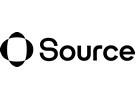Rien Kamman of Source.ag made two promises to a room full of growers. One playful and one serious. They all had come to Amsterdam for the second edition of Source Connect, organised for Dutch and Belgian growers. In addition to presentations by the CEO, they were given updates on what is coming in terms of new developments and were taken into the world of the Dakar Rally by Tim Coronel. The theme of the day: motorsport and greenhouse horticulture are both top sports, and data and innovation are crucial in this.

Rien addresses the audience
Doing more with fewer people
Motor racing driver Tim once spent half a day at a grower's computer himself. "Cool, I call that top sport," he enthused. What followed was a story about the Dakar Rally, but always with the connecting element with greenhouse horticulture: data. For instance, 2,300 people (!) used to work on 'two F1 cars', but now there are 'only' 800 because of the budget cap.
For entrepreneurs in greenhouse horticulture, it is the same. With their software products, Source.ag ensures that growers become scalable, or in other words that one grower can properly manage more and more hectares. Ernst van Bruggen, Adriaan van der Feltz, and Iko Koevoets discussed the technical developments that make this possible, or that will make it even better.

Just exchanging data with a pepper grower. Tim Coronel is also active in greenhouse horticulture with Aqcua 3 machines, which generate ozone water.

Joris van der Els goes through the day's program
Labor and energy
Source.ag introduced four new products in 2024: Source Irrigation Control, Source Cultivate, Source Sensor API, and Source Harvest API. The growers in the room all work with one or more of these products, and they are not alone in this. Meanwhile, 300 growers in 18 countries on 1800 hectares work with Source.ag's AI products.
For next year, the fast-growing Amsterdam-based company, which now also has an office in the US city of Chicago, is betting on even better ease of use and also ever better, more accurate models. It is also looking at integrating data on labor and energy into Source. The software developers will discuss the exact focus of the development with a group of growers.

In between the program parts, it was possible to network over a coffee or 'a juice'

Making cultivation plans during the workshop on Source Cultivate
Basic and advanced
Specifically for Source Control, Ernst added that efforts are being made to improve the handling of rare climate conditions, and they also want to support cultivation on organic substrates. A lot is already possible with all Source products, partly thanks to the API connection of sensors from eight suppliers, but not everything can be used by every grower, the people in Amsterdam realize. Therefore, they are also committed to better distinguishing between basic and more advanced functionalities.

Source's Customer Success Managers work closely with growers
Fruit temperature and growth duration
Besides lots of software specialists, the team of Source.ag, which has grown to more than 100 people, also has the necessary green finger knowledge. The presentation by Iko, Lead Plant Scientist, was about how Source.ag uses plant knowledge and wants to keep it comprehensible.
Besides literature and grower knowledge, the company also does experiments, often in the greenhouse with growers. As an example, Iko showed research into fruit temperature in sweet pepper and tomato. During the day, they found that in sweet peppers the fruit temperature can differ from -2 to +10 degrees Celsius from the greenhouse temperature. In tomato, it is -2 to +4 degrees. Still a considerable difference, which also affects the data models and, for instance, the prediction of fruit growth duration.
The program became truly interactive during workshops. In a workshop on Source Cultivate, growers in Dakartermen could 'let their hair down' with daring crop plans. Making virtual mistakes in simulations is instructive. You can also push the boundaries.

In Source Cultivate, you can safely simulate crop plans and push the boundaries to get the most out of a crop.
Top performance of growers
At the end of the afternoon, Joris van der Els presented three Special Awards. Top performances should be celebrated, was indeed a message the audience took away with them. Growers Carlo of Rainbow Growers, Frans of Bryte, and Robert of CombiVliet delivered such performances. Pepper grower Carlo filled in harvest data and kilos most consistently. Frans was the most faithful in filling in his plant measurements and the grower who did the most runs with crop plans in Source Cultivate turned out to be Robert from CombiVliet. His colleague Lars took home the bottle of champagne for him.

Joris and Rien of Source.ag in black with, from left to right, award-winning growers Frans van der Arend, and Lars van Baar who received the bottle on behalf of colleagues Robert and Carlo Vonk
And with that champagne, we return to CEO Rien's promises. The first grower who, after achieving top performance, decides to drink champagne from his shoe, just like F1 driver Daniel Ricciardo, may call Rien, as he then promises to take a 'nice' sip with him.

Rien Kamman made two promises to the room full of growers.
Large-scale greenhouse horticulture is important
What about that second promise? That one was more serious in tone. Rien promises to stand up for the story of greenhouse horticulture wherever he gets the chance in the public debate. A sector that can feed 175 million local consumers in the Netherlands and Belgium alone with 5,000 hectares of fruiting vegetables. "No small-scale, cute farm can compete with that," he says. Growing on a large scale with the help of increasingly good data is what Source.ag wants to continue working on with growers in the interests of what it invariably calls "democratizing global access to fresh food".
For more information:
Source.ag
info@source.ag
www.source.ag
